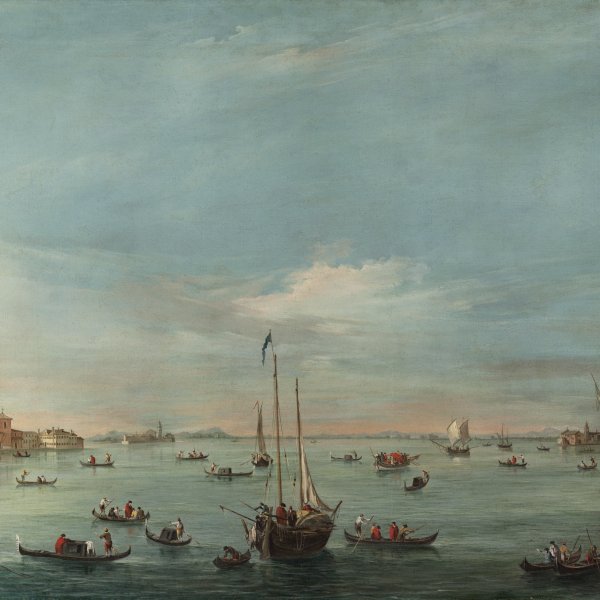Francesco Guardi
Venice, 1712-1793
Born into a family of painters, Francesco Guardi was trained then worked in the family studio under the direction of his older brother Gianantonio. It is thought that until around the late 1750s Guardi continued to work as a painter of historical and religious scenes as well as frescoes and still lifes. Works known from this period include The Holy Family with Angels (Toledo Museum of Art, Ohio), Hope, and Charity (both Ringling Museum, Sarasota). It was probably after his brother’s death that the mature Guardi began to depict views of the city of Venice. He adopted the style of his predecessor, Canaletto, whose output he studied with considerable care. Guardi’s first known work of this type is The Easter Thursday Festival in the Piazetta (private collection, Switzerland), signed and dated 1756. Over the following years Guardi retained a topographical precision typical of Canaletto in his views, but he added a more lively line and colour and also introduced imaginary elements. Among his finest works from this period are the series of twelve canvases depicting the ceremony of the Doge taking office (now divided among various museums in France), as well as The Piazza san Marco on the Feast of the Ascension (Fundaçao Gulbenkian, Lisbon). From the 1780s onwards Guardi’s style increasingly moved away from that of Canaletto and he included more fantastical elements in his views. He evolved towards the depiction of his so-called Capricci, which are ideal or unreal combinations of architectural elements and landscape.







